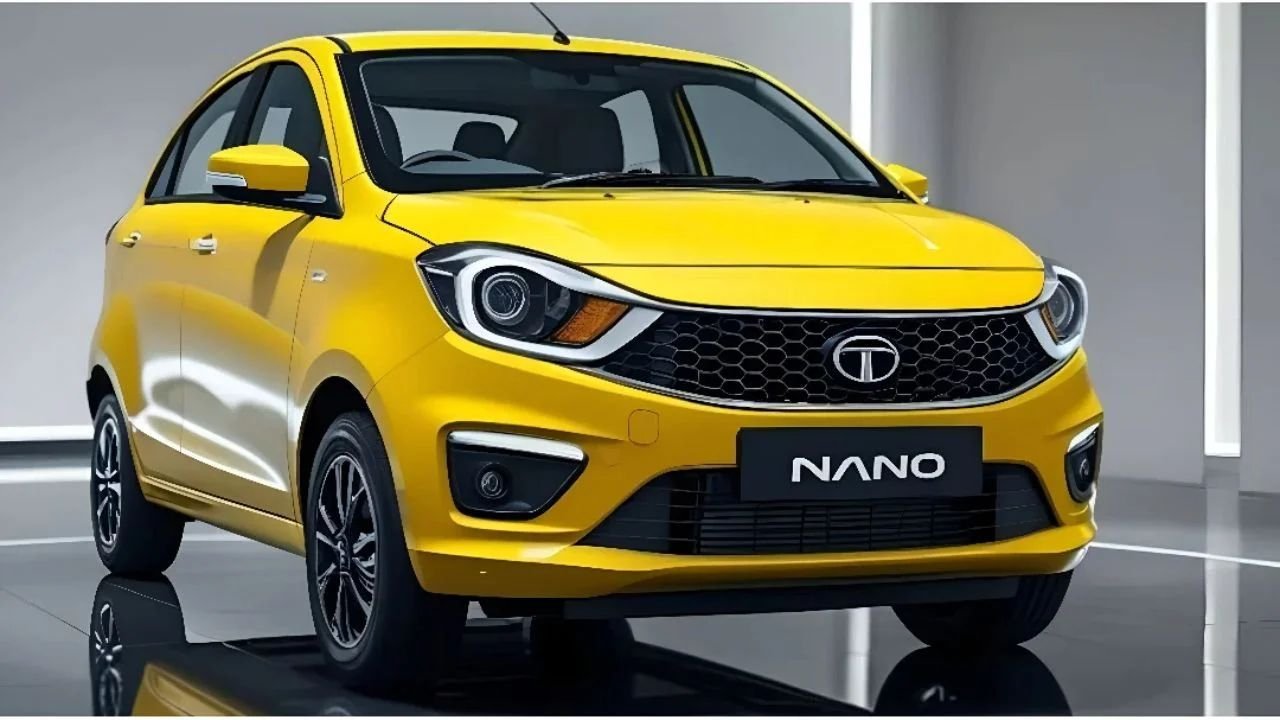When it comes to value-for-money vehicles in India, few names evoke as much emotion as the New Tata Nano. Touted as the “people’s car,” this tiny four-wheeler from Tata Motors revolutionised the Indian automobile industry. Designed with the vision of making car ownership accessible to every Indian family, the New Tata Nano offered an unbeatable blend of affordability, practicality, fuel efficiency, and ease of use.
Although production ceased in 2018, the New Tata Nano remains an icon in Indian automotive history. Let’s revisit what made this humble car so remarkable and why it still holds a special place in the hearts of many Indians.
A Big Dream in a Small Package
The New Tata Nano was first launched in 2008 with a price tag of just around ₹1 lakh, making headlines globally as the world’s cheapest car. But it was never just about the cost. The real achievement lay in how Tata Motors managed to package a complete family vehicle within such a low budget.
Powered by a 624cc, 2-cylinder petrol engine, the Nano could seat four adults comfortably. The compact footprint made it easy to manoeuvre through crowded urban roads, while the rear-mounted engine helped maximise cabin space. With a top speed of approximately 100 km/h and a fuel efficiency of 20–25 kmpl, the New Tata Nano proved itself as an ideal city commuter.
Designed for the Indian Middle-Class Dream
At a time when most Indian families relied on two-wheelers, the New Tata Nano offered a safer and more comfortable alternative. Its four-door layout, closed cabin, and better protection in accidents made it significantly safer for small families than bikes or scooters.
Tata Motors didn’t just focus on affordability; the company also worked on convenience. The small turning radius made the car perfect for congested Indian roads. Parking in narrow lanes or tight urban spaces was a breeze. Even first-time drivers found the New Tata Nano extremely easy to handle.
Features That Fit Your Daily Life
Despite its compact size and low cost, the New Tata Nano didn’t compromise on essential features. The base models came with basic dashboard instruments, while later variants added premium touches like air conditioning, power steering, front power windows, and even a music system.
The car’s suspension setup was surprisingly comfortable, absorbing small bumps and potholes well—a crucial benefit on India’s diverse roads. The simplicity of the interior layout was appreciated by many, especially older customers who preferred a no-nonsense driving experience.
Also Read – Tata Safari EV 2025 Launched – Electric Power, Desi SUV Style!
Mileage That Made It a Household Favourite
In a country where fuel prices are always a concern, the New Tata Nano delivered impressive mileage. With figures ranging from 20 to 25 km per litre, it helped families save significantly on daily commuting costs. Combined with its low maintenance expenses, the Nano became the ultimate budget-friendly car.
Even years after its discontinuation, many Nano owners continue to swear by its mileage and low running costs. Whether it was used for grocery shopping, school runs, or commuting to work, the car proved itself time and again.
Safety Improvements That Earned Trust
Initially criticised for lacking safety features, Tata Motors quickly addressed these concerns. Later models of the New Tata Nano included reinforced body structures, crumple zones, better brakes, and improved build quality. The five-star safety rating it received from certain independent crash tests reflected these enhancements.
It might not have had airbags or ABS in the early models, but the Nano’s core structure was redesigned to improve passenger safety. Its small size and nimble handling also contributed to avoiding accidents in crowded or tight traffic conditions.
Why the New Tata Nano Was More Than Just a Car
The New Tata Nano wasn’t just a car; it was a movement. It challenged global automakers to rethink pricing strategies. It brought dignity and aspiration to lower-middle-class families, giving them access to a dream they once thought out of reach.
Its availability in various vibrant colours and later trim levels like the Nano Twist and Nano GenX introduced more features and youthful styling. Whether you were a student, a newly married couple, or a retired person looking for a budget-friendly four-wheeler, the Nano had something to offer.
Real Challenges Faced by the New Tata Nano
Despite its many positives, the New Tata Nano faced several hurdles. The initial perception of being a “cheap” car, rather than an affordable one, created a stigma among potential buyers. Consumers aspired to own cars that symbolised status, and unfortunately, the Nano’s budget image worked against it.
Safety concerns, including a few high-profile cases of fire incidents, dented its reputation early on. Although Tata Motors quickly addressed these issues, public perception was hard to change. Moreover, as disposable incomes rose, buyers preferred larger, feature-rich hatchbacks even if they came at a higher price.
End of an Era – But Not the Legacy
In 2018, Tata Motors officially halted the production of the New Tata Nano. Low sales figures and changing consumer preferences were major contributors to its exit. Yet, the car remains a landmark achievement in Indian automotive history.
The Nano proved that innovative thinking could make car ownership accessible to the masses. It inspired not just Indian buyers, but global manufacturers to consider affordability, efficiency, and practicality in compact car designs.
FAQs About the New Tata Nano
Q1: Is the New Tata Nano still available in showrooms?
No, the production ended in 2018 due to low demand. However, used models are available in the second-hand car market.
Q2: How many people can the Nano comfortably seat?
The car was designed for four adult passengers.
Q3: What is the mileage of the New Tata Nano?
The Nano offered excellent mileage of 20–25 km per litre under normal driving conditions.
Q4: Did later models come with added features?
Yes, newer versions like Nano Twist and GenX included air conditioning, power windows, power steering, and improved interiors.
Q5: Was the New Tata Nano safe to drive?
While early models faced criticism, safety features were improved over time. Later variants had stronger build quality and better protection.
Final Thoughts: The New Tata Nano—A Car That Dared to Dream
The New Tata Nano may no longer be in production, but its impact on India’s automotive journey is unforgettable. It showed that even in a developing country, big dreams could be realised through innovation, engineering, and empathy for the common man.
Its practicality, fuel efficiency, low cost of ownership, and ease of use made it a beloved choice for many first-time car buyers. While trends and consumer demands evolve, the Nano’s story remains a timeless example of how a small car created a big legacy.
If you’re ever looking back at cars that truly changed India, the New Tata Nano deserves its place right at the top.
Some Important Link
| Download News APP | Click Here |
| WhatsApp Group | Click Here |
| Home Page | Click Here |















